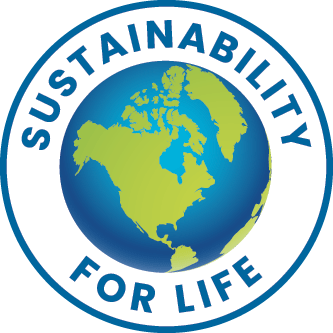Re-Invent America’s Recycle System

Re-Invent America’s Recycle System
“We have the technology and resources to operate the entire country with “Zero Waste to Landfill”.
H. William Clark
sustainabilityforlife.com
Note: Communicating this information as news to others is free of charge.6
Follow this link for a printable .PDF version of this information
Introduction


Re-Invent America’s Recycle System - Topics
The Problem
Define a Sustainable Recycle System
New Recycle System for “Zero Waste to Landfill”
Sustainable Recycle System: Specific Examples
Measure and Verify Success
The Future
A1. The Size of the Waste Problem

- Only 67 MMT of waste were Recycled
- Only 27 MMT of waste were Composted
- 34 MMT of waste were combusted for Energy
- 140 MMT of waste were placed in a Landfill
- By definition, this system is NOT sustainable for even another 50 years.
- Over the next few years, Americans must implement “zero waste to landfill” practices, we have no choice.
- The cost will be high initially, with a payback over the medium to long-term.
A2. The Harm to Human Health

- Landfills are leaching harmful chemicals into nature. Here is one important example.
- Per- and poly-fluoroalkyl substances (PFAS) are found in many products that enter
America’s waste. (7) - PFAS are contained in stain- and water-resistant fabrics and carpeting, cleaning products, paints, and fire-fighting foams. In addition, certain PFAS are authorized by the FDA for limited use in cookware, food packaging and processing.
- The EPA is taking a proactive approach to address PFAS contamination when found in landfill leachate and municipal wastewater discharge across the country. (7)
- Accumulation of certain PFAS has also been shown to occur in humans and animals, as found through blood tests.
- … current evidence suggests that the bioaccumulation of certain PFAS may cause serious health conditions.
A3. Landfills Don’t Leak ? Think Again

- The belief that landfills have liners and do not leak is a myth.
- In 2018, the Conservation Law Foundation published an article simply stating that all landfills leak, and our health and the environment pay the toxic price. (8)
- Multiple incidents of water containing PFAS leaching from landfills have been reported across the country. (9)
- It is very possible that the use of PFAS can be discontinued. We did without them before they were invented.
- Or… all material continuing PFAS could be burned for energy (but this creates an air pollution issue)

A4. The Root Cause of the Landfill Crisis
- 75 Years ago, Americans should have realized the landfill system would not work.
- Every citizen in America for the past 75 years is responsible for the system.
- The human race has grown and prospered for 5,000 years or more… did anyone stop to think about 100 years from now?... or 300 years ?
- What Americans have been doing for 75 years has been destructive and not logical. By definition, the day would arrive where we are over-whelmed with trash.
- Many Americans prefer to just throw things away, it is convenient.
- Such short-term thinking has to be put aside in order to find solutions.
- To start developing solutions, the problem must be viewed from the high level, the big picture.
B1. Define a Sustainable Recycle System - Terms
- Re-use – Use an item (container) again for the same original purpose after a cleaningsanitizing step. This will continue until the item is worn out, at which time it will be recycled.
- Recycle – Put an item in a recycle bin. A company picks up the material in the bin and takes it to a separation facility, where the different items are arranged on pallets. These pallets are then sold to companies that usually grind up or melt down the material to make products. This is much higher cost than re-use.
- Note: the lack of enough companies to buy the recycle material is the main reason the actual recycle rate is so low across the United States.
- Composting – Organic material, paper goods, tree branches, leaves, grass, shrubs (and other biodegradable items) are ground up and placed in a large pile, usually with food waste. The pile will develop heat and even smoke. The pile is turned over and mixed periodically. The time standard for any item to be labeled as “compostable” is a maximum 180 days to decompose. The resultant material is fertilizer. Commercial Composting companies do this on a large scale.
- Circular Economy – An economic system aimed at waste elimination and the continual use
and maximum re-use of resources.

B2. Re-Think all Product Materials and Manufacturing
- To effectively accomplish a re-invented recycle system, 100% of all products sold in America need to be re-evaluated.
- How will we re-use, recycle, compost (or burn the last 10%) this product when it is no longer needed ?... This involves assessment of the materials in the product.
- If a planned product does not lend itself to re-use, recycle or composting, then how could the materials be changed to facilitate “zero waste to landfill” ?
- Yes, every single product sold needs to pass an evaluation concerning how it will be effectively re-used, recycled, composted or burned (last 10% only).
B3. Define a Sustainable Recycle System - Goals

- America must change to a “Circular Economy”, which operates with zero waste to landfill. Centuries from now, the land will contain virtually zero waste from this system.
- Yes, the technology and resources exist today to accomplish zero waste to landfill. It just takes the will, the commitment, and financial re-allocation.
- The system will have a higher short-term cost, and financial benefits long-term.
- Homes, businesses, churches, schools and other users will all have to receive training and implement new procedures
- Municipal contracts for recycle will be written specifying zero ground waste.
- Recycling companies will have much more capability than current operations.
B4. New Packaging Standards

- All packing material could be wood or paper. Zero foam blocks and zero plastic.
- In fact, polystyrene foam and other polystyrene materials could not be used. There are available, less harmful, materials.
- Combining two materials in one package item (harms the ability to recycle or compost the item) could not be used. Examples:
- Potato chip bags made from metal and plastic
- Paper envelopes with plastic windows.
- Thin plastic liner material around any paper (lamination)
- Paper labels on plastic bags.
- Many other examples
B5. Reduce total waste by 50+% via Elimination and Re-use

- Eliminating the use of Plastic by as much as 80% is covered in another document.
- Every item used by American consumers, businesses, churches, schools, etc.. would be evaluated for elimination.
- Examples of eliminating waste:
- One-time-use paper newspapers, magazines and catalogs. Electronic only. A program would be created to provide low-cost e-readers to those in need.
- Every kind of paper advertising mail-out in the U.S. Mail.
- Many, many other examples
- Items in any store could be in re-usable containers, with deposit. Return, sanitize, re-package, re-label.
- Cardboard boxes for shipping could be used 5-6+ times before recycling. This would greatly reduce the number of trees cut-down.
C1. A New Recycle System for “Zero Waste to Landfill”
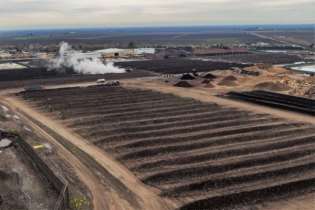
- First, establish expectations for a new breed of Recycle Company..
- These new companies will command higher fees, be far more technologically capable, and not put waste in the ground.
- There will be some organization to purchase and/or take ALL the waste, or it will be the type that can be composted or burned.
- However, another key aspect is to require companies that make products to consistently pay for the recycle of all their used products. (10)
- The best way to start is with volunteer cities and counties in various states across the nation, with federal grants.
- The goals are to maximize recycle and composting, with combustion for energy as a part of the solution.
- Can early implementations be successful?
C2. “Zero Waste to Landfill”, Details
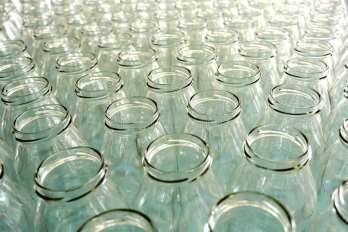
- Paper can often be recycled.
- Most biodegradable material can be composted. Plant, paper, wood, food waste.
- Construction waste is a large and important category. All the metal and glass can be recycled. Wood can be ground up and ultimately composted.
- Stone, brick or used cement can be ground up for road-beds or other projects.
- Many glass and metal containers can be cleaned and used over and over again. Remember the milkman ?
- Any glass or metal items not re-used, can be recycled.
- Use of plastic must be greatly reduced, and waste plastic should be recycled or burned. Refer to the document “Significantly Reduce Plastic Use”.
- All electronic waste should be recycled or burned.
- There are many other examples.
C3. Waste Separation at Homes, Businesses, Schools, Churches
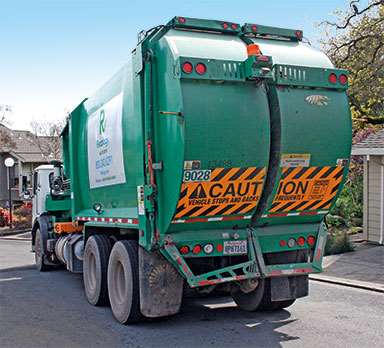
- An efficiently operating recycle system starts with initial separation of material at the place of waste generation. Below is one idea for new equipment.
- The home recycle system of the future will use bins (with roller wheels) that are 4 foot tall and 4 foot wide, with 4 compartments and hinged lids.
- There are already examples of two-compartment trash/recycle trucks (11)
- The 4 compartments are for: metal-plastic, glass, paper, all else except biodegradable-compostable. Business bins would be bigger.
- Biodegradable-compostable is the sole material that will go into the regular trash (different truck)
- The recycle truck will have arms to pick up the 4- compartment bins, move them up to the top of the truck, where the lids of the 4 compartment would swing open.
- The contents would then spill down 4 chutes to 4 different compartments in the truck.
D1. Specific Examples - Handling Glass Recycle
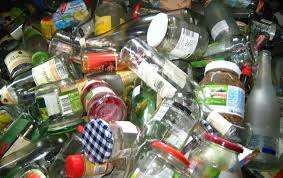
- The optimum is that glass items are standard in sizes and shapes, with a deposit. Once empty, these items are returned for deposit refund (minus cleaning cost), then are cleaned. The clean items are then available for any other product. If not re-used, the item is now ready for recycle:
- Many current municipal recycle systems pick up bulk material and separate it later.
- The glass items break and contaminate other items, so some recycle companies took glass off their list of recyclable items.
- For the new system, glass indeed must be recycled, but separately (see previous description of separation).
- The new system will overcome any technical challenge to full recycle.
- The goal will remain “zero waste to landfill”.
D2. All Electronic Waste must be Recycled or Burned
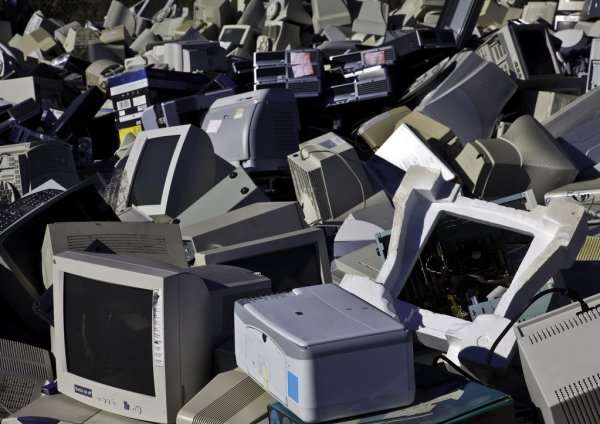
- Electronic waste includes televisions, phones, computers, printers and all other products containing circuits and electronics.
- As part of their service, the manufacturers should be required to establish recycle systems to take back and recycle (or burn) all their products. They could band together and fund large recycle centers for just this purpose.
- Important questions: How much plastic can be eliminated from the manufacture of electronics?
- Do electronic products need to be re-designed to make them easier to recycle?
- This system has to be consistent and reliable.
- The cost of electronics will increase and it may even be appropriate to have a separate charge at the time of purchase specifically for “recycle”.
D3. Solutions for the “Food Take-Out” Waste Problem
- Each year billions of one-time use food take-out containers (mostly plastic) are used in the United States. Most end up in the trash.
- Stores and restaurants could stop using plastic items for food and beverage take-out.
- Establish 20-25 standard-size containers (probably aluminum or stainless steel) for food and beverages. These containers can be re-used for years.
- A deposit is required, and the cash deposit is re-paid (minus a percentage for cleaning and sanitizing) when the item is returned.
- Items can be returned to any restaurant in the United States for cash deposit return. Restaurants can return the used items to central cleaning facilities set-up by the NRA, or each restaurant can sanitize the containers, just like regular restaurant dishes are cleaned.
- or….
D3. Solutions for the “Take-Out” Waste Problem, continued..


Option 2:
- The NRA could set up a supply system for take-out plates, bowls, clamshells, cups and utensils, etc.. made from paper certified-as-compostable material.
- These items do NOT have a thin plastic liner. They may have a liner of polylactic acid (PLA) which comes from plants.
- For Option 2, the NRA should establish and finance Commercial Composting facilities all over the United States.
- Option 2 cannot be used unless there is a viable Commercial Composting facility available to take the waste.
- In reality, both options may be available to restaurants.
- These two systems would eliminate billions of waste items per year.
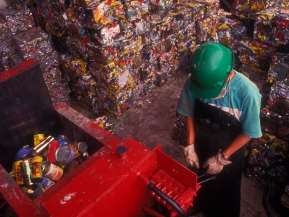
E1. Measure and Verify Success
- Underwriters Laboratories has a program for any organization or event to achieve certification for “Zero Waste to Landfill”. (12)
- This standard has a 100% and 98% achievement levels. Plus other levels of achievement.
- For the 100%, waste must be verified as re-used, recycled, or composted.
- This certification allows the last 10% of waste to be burned. So there is a very small amount of ash remaining. Hence the phrase “virtually zero”.
- It is possible to mix ash residue with soils and other materials to make a useful road-bed mix. If so, this would meet the spirit of “zero waste to landfill”. (13)
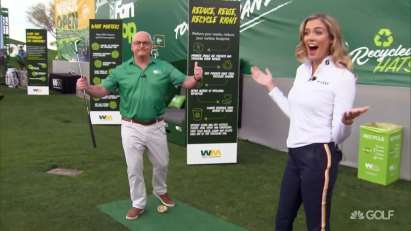
E2. A Real World Sustainable Recycle Example
- Here is a description of a multi-year success story.
- For several years, the Waste Management Phoenix Open Golf Tournament has carried out it’s event with zero waste to landfill, certified by Underwriters Laboratories. (14)
- More than 500,000 people attend across six days, and nothing goes to landfill.
- Apparently, the certification allows the last 10% to be burned. So some ash would go to the ground.
- If this golf tournament can do it, every city and county in America can do it.
E3. Re-Invent America’s Recycle System - Summary

- America’s current Recycle System is allowing over 140 Million Tons of waste per year to be placed in landfills. This is harmful and not sustainable.
- A new national strategy is needed, with the goal of “zero waste to landfill”.
- Elimination, re-use, recycle, and composting efforts must greatly increase.
- The goal should be to establish a “circular economy”, not throw-away items.
- Recycle companies need to have vastly improved capability.
- The short term cost will be higher, with payback over the long-term
- Companies can pay for the recycle of the material in the products they sell.
- There are already measurement systems available, and success stories.
- Re-use, recycling and composting must continue every day, in every way.
- Materials and manufacturing for all products should be re-evaluated.
F1. The Future - Recycling Should Continue During Times of Challenge
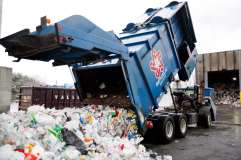
- Some municipal systems have completely shutdown recycle during the Covid-19 crisis.
- A municipal recycle company stopped taking bags of clothes for recycle (which prevented the old clothes from being placed in a landfill)
- In the new system, this can never happen.
- It will be helpful for employment and the economy that all recycle activities continue. The new system must ensure this consistency.
F2. The Future - Cleaning Up the Harmful Mess
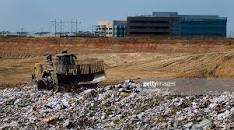
- Once a Circular Economy with “Zero Waste to Landfill” is in place and functioning, the next logical step will occur.
- New contractor companies could systematically dig-out and recycle, compost or burn (to produce energy) every bit of waste in the 13,000+ landfills across the country.
- It was a huge mistake to create waste for 100+ years.
- Each landfill is leaking harmful compounds, and we cannot allow the harm to continue.
- Americans could do this for their children and grandchildren.
Citations
- Sierra, June 26, 2019, The U.S. Recycling Center is Garbage
- National Geographic, Dec. 20, 2018, A whopping 91% of plastic isn’t recycled.
- The Guardian, June 21, 2019, Americans' plastic recycling is dumped in landfills, investigation shows
- CBS News, March 20, 2019, American cities confront a "slow-moving recycling crisis"
- FoodBev Media, Dec. 18, 2018, Packaging producers in UK to pay costs of recycling their waste
- EPA, 2017, National Overview: Facts and Figures on Materials, Wastes and Recycling
- EPA, Sept. 17, 2019, EPA Awards $6 Million to Research Potential Environmental Impacts of PFAS Substances in Waste Streams
- Conservation Law Foundation, July 23, 2018, All Landfills Leak, Our Health and Environment Pay the Toxic Price
- WCAX3 TV, Burlington, Vermont, Feb. 7, 2020, Report: Leaching water from landfill contaminated with PFAS.
- Time Mag., Feb. 26, 2020, To Fix America’s Broken Recycle System, States want Companies to Foot the Bill.
- Novato, Calif. Sanitary District, 2020, One Truck, Two Bins, Better Service.
- UL.com, June 13, 2013, UL Environment and Zero Waste Validation.
- Research Gate, May 2012, Fly ash as a road construction material
- Cronkite News, Jan. 30, 2019, Waste Management Phoenix Open finding creative ways to remain “greenest show on turf”
H. William Clark, born in America, resides in Texas
